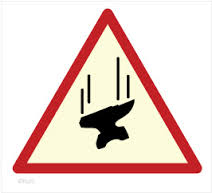
Don’t say you weren’t warned. From Goldman:
Early signs of a structural surplus are already evident
The first quarter of the year usually sees weather related disruptions to iron ore supply and an increase in demand from the Chinese steel sector; this year, iron ore prices have fallen by 21% while Chinese port stocks have increased to a record 109Mt. The market has therefore started the second quarter with an inventory overhang and with limited upside in demand for the rest of the year, while the upward momentum in seaborne supply continues. We believe the structural surplus will become increasingly pronounced during the current quarter and going into 2H 2014.Lower prices are required to force marginal supply out
We forecast a seaborne surplus of c.77Mt in 2014, rising to c.145Mt in 2015. Lower seaborne prices will eventually impact Chinese domestic prices, forcing the closure of marginal supply coming mainly from small mines near the coast and fully exposed to competition from imports; this time, we expect these closures to be permanent. However, we believe the market continues to underestimate the level of competition implied by the growing divergence between Chinese demand and seaborne supply.The time to test the Chinese cost curve is near
The level of cost support that high cost mines in China will provide when the market shifts into structural oversupply has not been properly tested yet; the correction in 2H 2012 was too brief to indicate how Chinese producers will respond this time. Partly for that reason, a wide gap in expectations persists: industry sources in China believe domestic supply will expand further while market participants ex-China forecast Chinese mine closures on a large scale. In our view, the scale of closures will be relatively limited because a) closures of small mines in coastal areas will be partially offset by new projects in both coastal and inland regions, and b) the Chinese iron ore sector will strive to improve its competitiveness via increased mechanization and higher productivity. On that basis, we continue to argue that the Chinese cost curve will not prevent seaborne iron ore prices from crashing through the US$100/t level going into 2015.
I can only add that Goldman is forecasting an $80 average price for 2015, which implies dips to $65 around inventory cycles…

